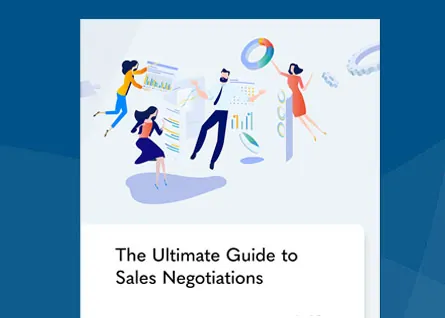5 Essential Steps to Ensure a Successful Sales Meeting

The best sales professionals know there is symmetry in a process. Experience teaches the necessary steps, and once a process is refined, there can be no rushing, skimping, or cheating. Prospecting is one example. You find a company, research a contact, and set an approach. Gaining a meeting means your prospecting prep worked, but there’s no time to rest. In sales, every process leads to another, and now you must prep for your meeting. Once again, the more work you put in before, the greater your chance for a positive outcome. Here are five essential steps to ensure a successful sales meeting:
Identify Objectives
If the purpose of prospecting is to gain a meeting, what is the purpose of your meeting? The more clearly you define your outcomes, the easier they are to achieve. Come up with a list of things you want to learn about the client, whether it’s a product they are using, a problem they are having, or the solutions they have already tried. Next, go a step further and devise a list of things you expect the client needs from you. In addition to your own best outcomes, what does your client want from this meeting? Of course, this requires some flexibility. Always assess the direction of a meeting and adjust your wants accordingly.
Set and Share an Agenda
In business, time really is money. No matter how friendly your professional relationships, everybody has other things to do. To get the most from a sales meeting, set a time limit and outline the process the meeting will follow. This includes the time allotted for each part, such as your introduction, presentation, main points, questions, concerns, etc. Remember, an agenda lets everyone know where you are in the process and prevents participants from checking out or losing patience. The type of meeting, be it virtual or in person, can also dictate your agenda. In virtual, set additional time for introductions to build rapport and consistently check in with participants. In advance of the meeting, share the agenda with enough time for review. If in person, bring printed copies for easy distribution.
Prepare the Tech
Nothing derails a meeting like a technical glitch. Whether in person or virtual, it is essential the required technology works. For virtual, make sure all your participants agree on a web conferencing platform, such as Zoom, Teams, Webex, etc. If in person, do you have a conferencing link set up for anyone who cannot physically join? With PowerPoint, double check the order of your slides and ensure all links properly work. Did any information drop off during the course of reviewing, saving, or sharing? Before your meeting, close out of other programs to prevent awkward or embarrassing screen shares, and make sure you do not have any filters that turn you into a jackalope.
Know the Participants
For a successful sales meeting, it’s vital everyone feels comfortable. Part of this is a host who knows their guests. For each person in a meeting, be prepared with a question or comment unique to them. These are easily gleaned from social media and ensure you’re not calling out something others do not already know. It can be simple, like acknowledging Katie as a fellow cat person or noting Walter is a Civil War reenactor, but that personal touch shows you did your homework and builds rapport. Recall specific concerns from previous communication, such as Pepe’s need for quick delivery, and note any additional names that come up during a meeting, like a casual mention that Marty may like an idea. You want to learn who Marty is before he becomes a problem.
Follow-Up
Just as no deal is complete until the paperwork is signed, no meeting should end without the proper follow up. Contrary to what some may think, this too begins with your preparation. At the close of your meeting, make sure all questions have been asked and satisfactorily answered. If anyone is having second thoughts or seems unsure of something, do not end the meeting. Reiterate all agreements and set tasks that need to be accomplished, such as Katie providing a revised timeline or Walter sending a shipping schedule. Make sure you have noted any documentation that needs to be sent along to any other decision makers who may need the meeting minutes or video.
While we all talk about a sales process, we sometimes forget that a sales process is the culmination of many miniprocesses. For example, prospecting is made up of steps toward the goal of setting a meeting. A meeting itself is a process with the hope of obtaining a greater understanding, building rapport, and, if needed, setting more meetings. In all these, sales pros know challenges will arise, and you cannot prepare for all contingencies, but the best know that preparation is always key. The more you do to prepare for your sales meeting, the more confident you will be in making your presentation, which goes a long way to establishing the relationships needed for successful outcomes.

- Account Planning (12)
- Awards (44)
- Client Testimonial (37)
- Personal Branding (21)
- Podcast (12)
- Research (78)
- Sales Career Development (90)
- Sales Coaching (166)
- Sales Consulting (141)
- Sales Culture (180)
- Sales Enablement (382)
- Sales Leadership (116)
- Sales Management (267)
- Sales Negotiation (14)
- Sales Prospecting (138)
- Sales Role-Playing (19)
- Sales Training (243)
- Selling Strategies (281)
- Soft Skills (78)
- Talent Management (101)
- Trusted Advisor (29)
- Virtual Selling (57)
- Webinar (13)

























